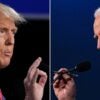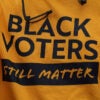A key House committee on Wednesday released a copy of a $40,000 check it says was laundered through a China company to Joe Biden in 2017, about eight months after he left office as vice president.
The check to Biden dated September 2017, a copy of which was released by the House Oversight and Accountability Committee, is from James and Sara Biden, the president’s brother and sister-in-law.
The committee said the check to Biden is linked to a Chinese energy company, CEFC, that the president’s son Hunter Biden and brother had partnered with. CEFC was associated with the Chinese Communist Party, the committee’s chairman said.
The Daily Signal depends on the support of readers like you. Donate now
The check is marked as a “loan repayment,” the same notation on a copy of a $200,000 check to Biden that was released by the House committee last month.
“It’s also worth remembering that Biden family efforts to secure millions from this Chinese company began when Joe Biden was still vice president,” House Oversight and Accountability Chairman James Comer, R-Ky., said in a video message. “In taking funds sourced to a CCP-linked company that wanted to advance China’s interests, Joe Biden exposed himself to future blackmail and put America’s interests behind his own desire for money.”
The revelation comes as Oversight and two other House committees are engaged in a formal impeachment inquiry into the president and his actions.
Bank records showing money going directly Joe Biden appear to conflict with the president’s repeated statements that he never benefited from his family’s business deals. House investigators have determined that Biden family members operated at least 20 shell companies that brought in tens of millions of dollars, mostly during Biden’s time as Barack Obama’s vice president from 2009 through 2016.
White House spokesperson Ian Sams strongly criticized Comer.
“Comer’s lies and conspiracy theories are getting more desperate by the day,” Sams, senior adviser to the White House Counsel’s Office, posted on X, formerly Twitter.
Sams also reposted comments from others who defended the payment as a short-term loan from Joe Biden to James Biden.
Comer’s committee also released a 12-page memo on bank records that explains the web of money.
On July 30, 2017, Hunter Biden demanded payment of $10 million from associates at CEFC, the Chinese energy company, in a What’sApp message to CEFC’s Raymond Zhao. In the same message, the younger Biden claimed that his father was seated near him at the time.
Biden family members began working with CEFC while Biden was Obama’s vice president.
On Aug. 8, 2017, Northern International Capital, another Chinese company affiliated with CEFC, sent $5 million to Hudson West III, a joint venture established by Hunter Biden and CEFC associate Gongwen Dong.
That same day, Hudson West III sent $400,000 to Owasco, P.C., an entity owned and controlled by Hunter Biden, the House committee’s memo says.
A few days later, on Aug. 14, Hunter Biden wired $150,000 to Lion Hall Group, a company owned by James and Sara Biden.
Seven days after that, on Aug. 28, Sara Biden withdrew $50,000 in cash from a Lion Hall Group account. Later that same day, she deposited $50,000 into the couple’s personal checking account.
Then, on Sept. 3, Sara Biden wrote a check to Joe Biden for $40,000, with the notation “loan repayment.”
The $200,000 check from James Biden to his brother Joe Biden came in 2018. Also marked as a “loan repayment,” it was cut the same day that Americore Holdings paid James Biden $200,000.
“Like the payment to Joe from Americore funds, it’s certainly plausible that this payment where James and Sara used funds from China was indeed a loan repayment to Joe,” Comer said in the video.
“But even if this $40,000 check was a loan repayment from James Biden, it still shows how Joe benefited from his family cashing in on his name—with money from China, no less.”
Have an opinion about this article? To sound off, please email letters@DailySignal.com, and we’ll consider publishing your edited remarks in our regular “We Hear You” feature. Remember to include the URL or headline of the article plus your name and town and/or state.































